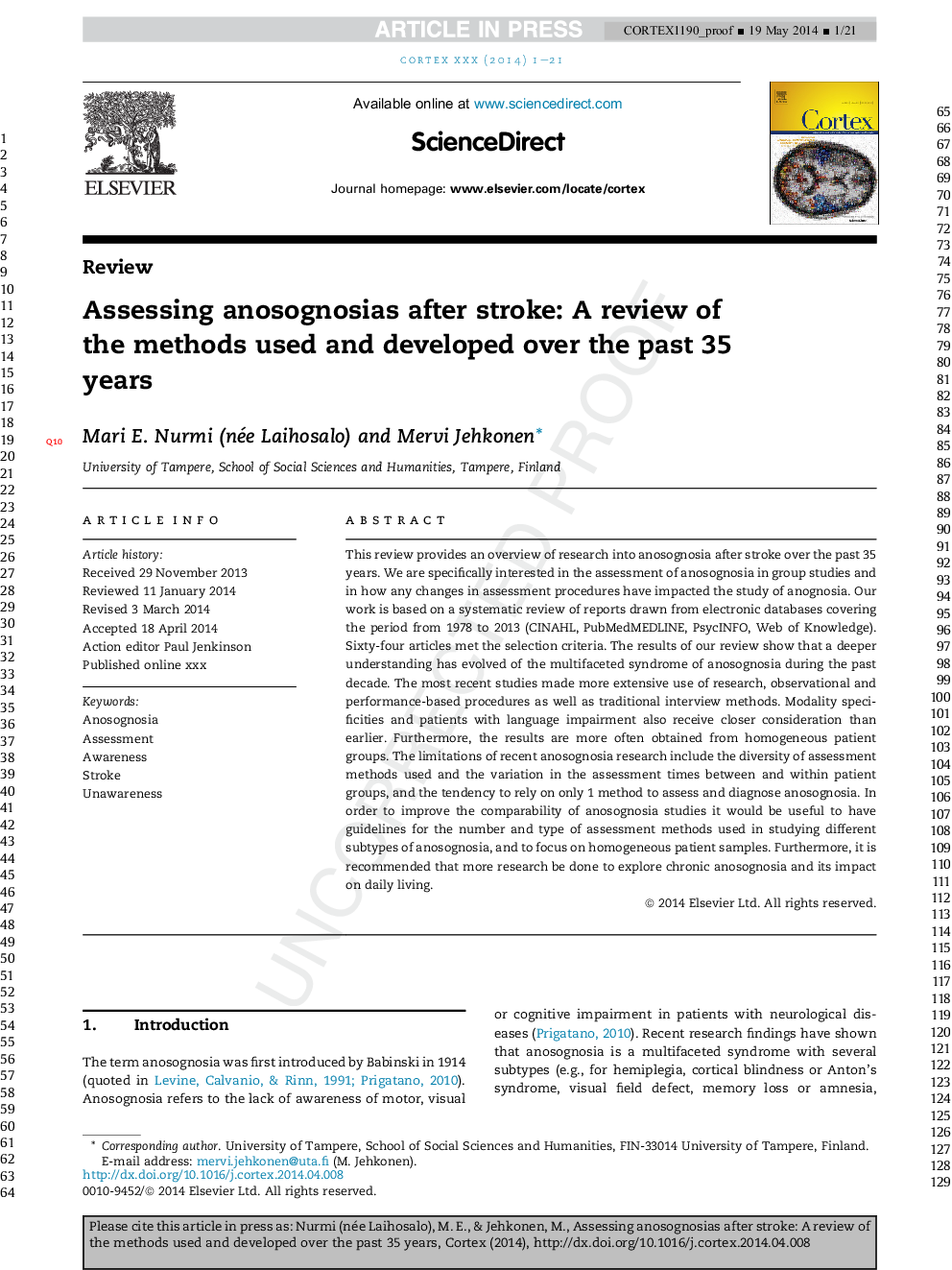| Article ID | Journal | Published Year | Pages | File Type |
|---|---|---|---|---|
| 7315040 | Cortex | 2014 | 21 Pages |
Abstract
This review provides an overview of research into anosognosia after stroke over the past 35 years. We are specifically interested in the assessment of anosognosia in group studies and in how any changes in assessment procedures have impacted the study of anognosia. Our work is based on a systematic review of reports drawn from electronic databases covering the period from 1978 to 2013 (CINAHL, PubMedMEDLINE, PsycINFO, Web of Knowledge). Sixty-four articles met the selection criteria. The results of our review show that a deeper understanding has evolved of the multifaceted syndrome of anosognosia during the past decade. The most recent studies made more extensive use of research, observational and performance-based procedures as well as traditional interview methods. Modality specificities and patients with language impairment also receive closer consideration than earlier. Furthermore, the results are more often obtained from homogeneous patient groups. The limitations of recent anosognosia research include the diversity of assessment methods used and the variation in the assessment times between and within patient groups, and the tendency to rely on only 1 method to assess and diagnose anosognosia. In order to improve the comparability of anosognosia studies it would be useful to have guidelines for the number and type of assessment methods used in studying different subtypes of anosognosia, and to focus on homogeneous patient samples. Furthermore, it is recommended that more research be done to explore chronic anosognosia and its impact on daily living.
Related Topics
Life Sciences
Neuroscience
Behavioral Neuroscience
Authors
Mari E. Nurmi (née Laihosalo), Mervi Jehkonen,
